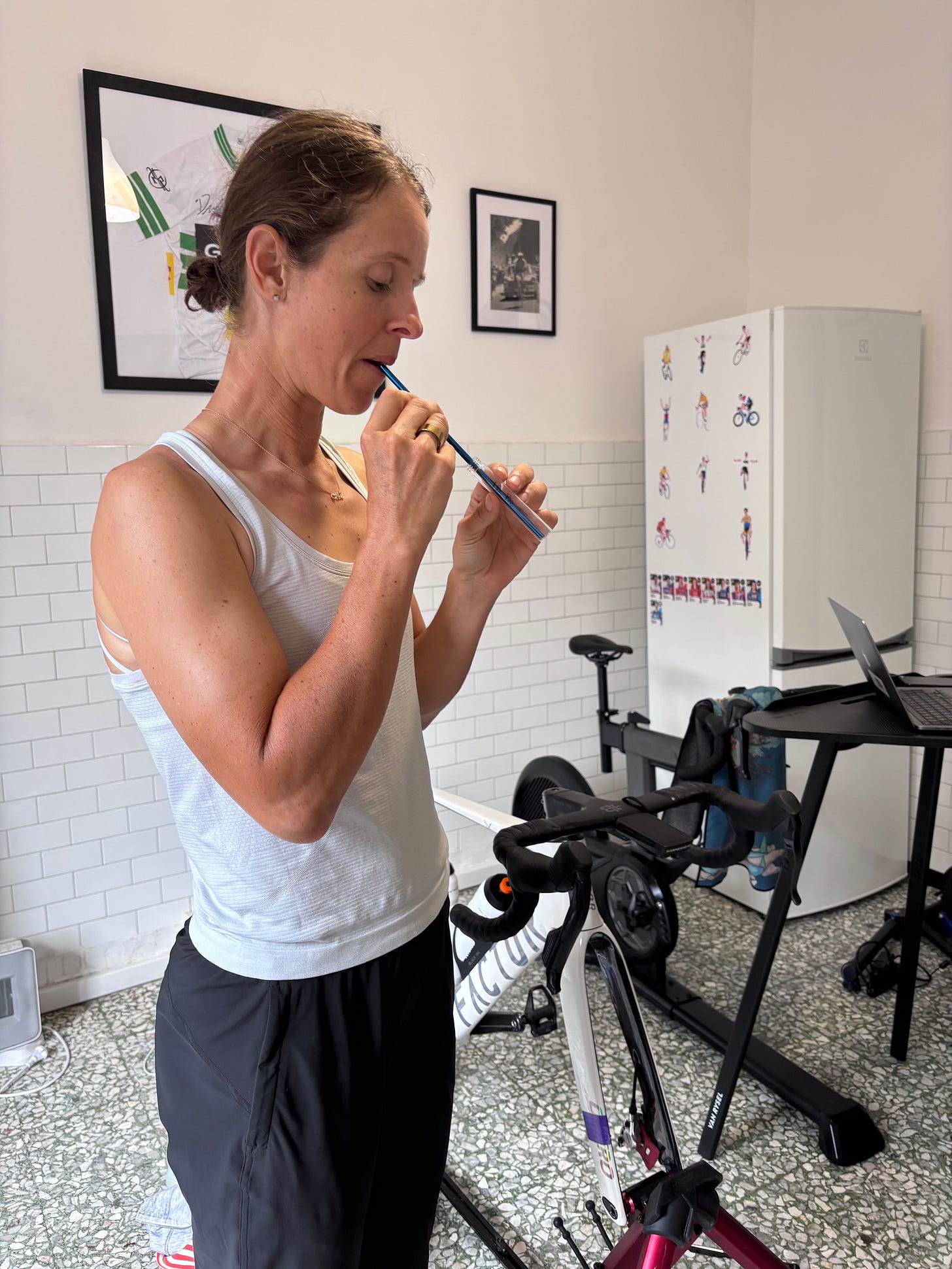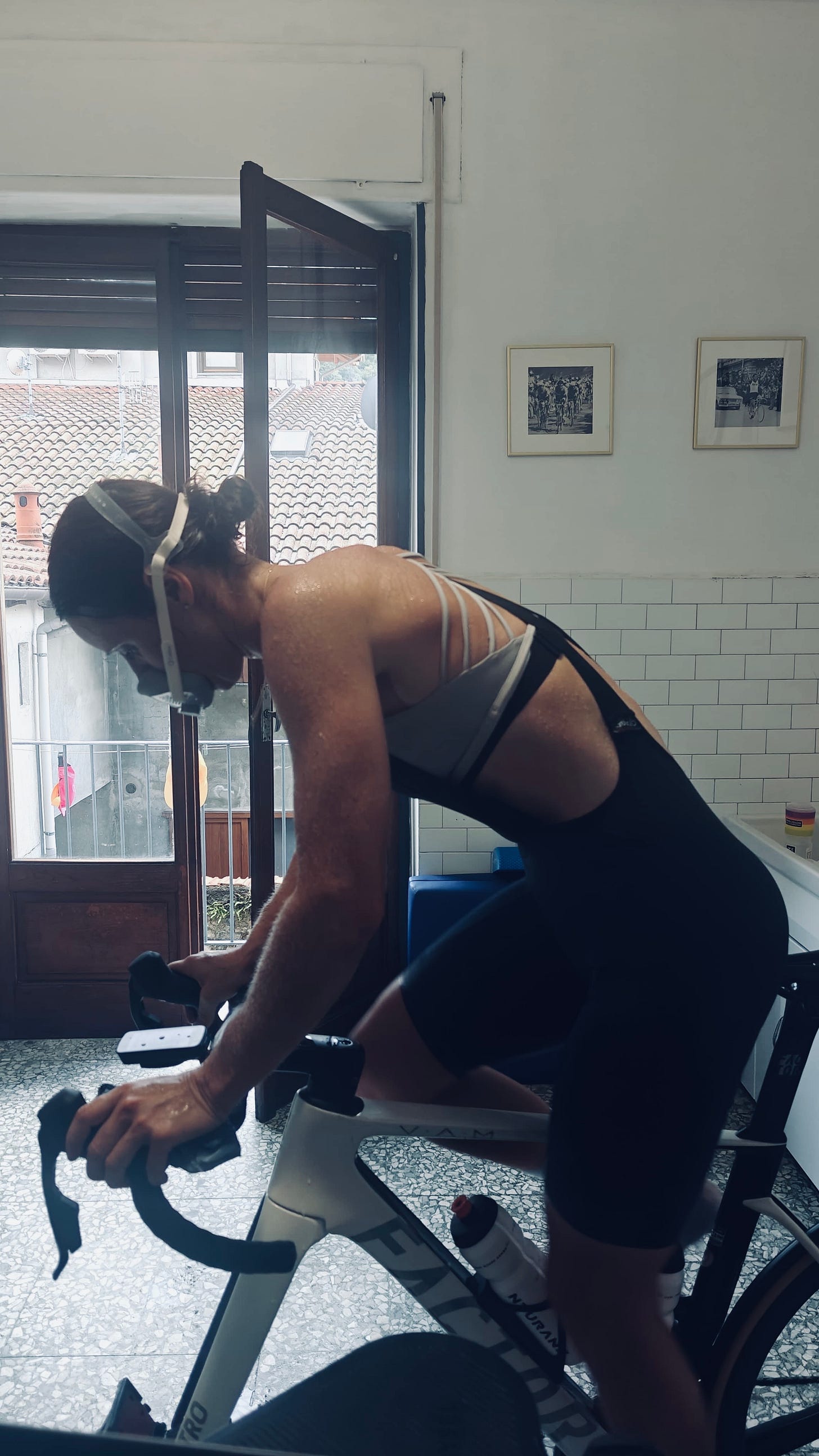I fu**ing love science. Always have.
So what I did yesterday gave me the same kind of giddy excitement most kids feel when they walk through the gates of Disneyland.
Landing at MXP airport at 9 a.m., my next stop was the small (outdoor-paradise) town of Coggiola, where I met up with Dr. Jamie Pugh, co-founder of ExoAnalytics.
120 grams of carbs per hour. That’s the current hot number in endurance sport. “More is better,” or at least that’s the way it’s trending. Some riders are even turning it into a brag: who can consume the most gels.
But what if more isn’t better for you? And what if training your gut to handle more, doesn’t actually make sense?
The even bigger question: Why are we guessing at all?
And that is exactly why yesterday, I did an ExoAnalytics test. Essentially a way of measuring how many carbs per hour my body can actually process. Not theory, but data on me.
So here’s how it works: the science is grounded in breath analysis. Standard laboratory tests measure the ratio of oxygen in to carbon dioxide out to calculate how much of your energy is coming from total carbs versus fat. The ExoAnalytics test takes this further and can show you your body’s ability to take on carbs and use them during exercise. Just how much of that sports drink or those gels do you need? Push that high enough, and you find your personal ceiling for carb utilization. From there, you can translate that into the grams/hour your gut can realistically handle.
“The science of our tests have been used in research studies for over 30 years. However, until now, they have been mostly restricted to laboratory settings. Our test allows athletes to understand their own fueling requirements for races and training. We see so many headlines from athletes about very high carbohydrate consumption rate but we know this doesn’t translate to everyone. We know from research and our own testing that not everyone can tolerate or use such high numbers and that others can probably take on more than they currently are.”
- Jamie Pugh
The test itself was only 90 minutes long and would be simple to follow at home. The kit is neatly put together with clear instructions, and honestly, the hardest part for me was spending the full 90 minutes on a trainer (I’ve become spoiled only riding outdoors).
So why was this something that I felt like was more than worthwhile to test? For me, the “why” is two-fold:
Performance optimization, making sure I’m not under-fueling and leaving watts on the table, and
Long-term health, avoiding cramming down carbs my body can’t actually absorb.
Based on training notes and feel, I’ve guessed I sit around 75–80g/hour, but it’s just that, a best guess…until now.
For years, endurance fueling advice has been one-size-fits-all: “Eat this many carbs per hour, drink this much fluid, take this many electrolytes.” But the reality is that two riders, same weight, same FTP, might process carbs completely differently. This test is an opportunity to look inside our own bodies. In practice, ExoAnlaytics is an excellent example of giving people actionable data about their own bodies.


What I love about this test is that it’s accessible. Anyone can try it, learn something about their body, and fuel smarter. And maybe, just maybe, stop playing the “eat more carbs than your training partner” game.
For me, this trip to Coggiola was just as much about curiosity as it is about race-day performance. As I said at the start of this, I fu**ing love science. Always have.
…and not to worry, once I get my final results back, I’ll share the numbers and do a deeper dive into what they mean for my fueling strategy.



